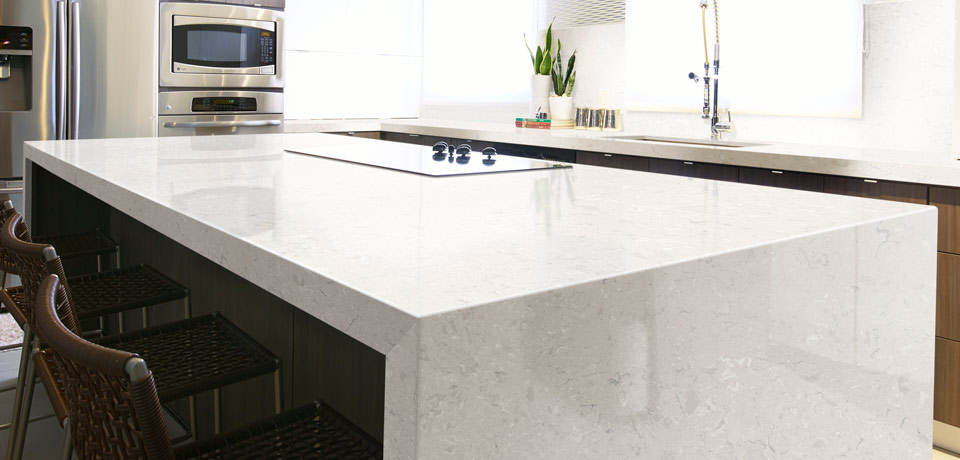When it comes to choosing countertops, most homeowners prefer the look of stone. Quartz and granite are the two heavy hitters in this arena, and the marketplace offers a nearly endless array of unique colours and patterns to choose from.
A typical countertop is put through a lot with scratches, stains and the stresses of everyday life. So the question is, what will meet both your clients’ lifestyle needs and the particulars of their personal style?
There are a number of things to consider when advising your client on deciding between quartz and granite. Appearance, durability, maintenance and environmental impact are among the biggest concerns, which we’ll tackle here.

Options are everything
As with any countertop material, the visual differences between quartz and granite is a matter of personal taste and opinion. For some, the natural look of granite is a must-have, as it is simply a beautiful material that will make any room pop, regardless of surrounding style or décor. On the other hand, many homeowners prefer the larger variety of patterns and designs available with quartz.
FLOFORM Countertops, which works with Co-op Home Centres across Western Canada, exclusively offers the Cambria brand of quartz. Cambria is a leading manufacturer in quartz surfaces with a wide range of colours and patterns to choose from.
Cambria has more than 125 different quartz designs for customers to select from, with new designs being released every year. The designs are categorized into distinct collections that each has its own sense of style. For example, the newly released Oceanic Collection includes designs that feature rolling waves and linear flow. The Quarry Collection offers a selection of designs that mimic the look of granite, while the Marble Collection contains designs that pay tribute to the beauty of marble.
Durability – tough options
Granite is often promoted as the most durable natural countertop material available, but quartz is actually among the hardest minerals available on earth. Cambria quartz surfaces are 93 per cent pure quartz. Granite typically only contains 40 to 60 per cent quartz, along with more porous, weaker minerals. As a result, granite tends to be more susceptible to damage. The durability of quartz also means you can be more creative with it. Striking edge profiling, wider overhangs and distinctive shapes are all options that will allow your clients to further personalize their kitchens.

Responsible choices
Today’s consumers are trying to make sustainable and environmentally conscious choices when remodelling their homes. While quartz in general tends to leave a smaller carbon footprint than granite, Cambria’s product in particular is mined in North America, meaning lower transportation requirements than other quartz-surfacing products produced internationally. Moreover, 100 per cent of the water used in Cambria’s processing and fabrication facilities is recycled through a series of advanced settling and filtering techniques. By contrast, granite needs to be quarried from the ground and then shipped across the world to the manufacturing site.
Keeping up with clean-up
Maintenance is another major difference between quartz and granite. With regular chemical re-sealing, granite is resistant to stains. However, quartz, as a naturally non-porous material, repels all stains. Fruit juice, coffee and even red wine cannot penetrate its surface – with no sealing required. This attribute also makes quartz an ideal choice for those who love to cook. Because it’s non-porous and non-absorbent, it won’t draw in moisture from raw or leftover food, which can harbour harmful bacteria. There is no safer stone surface for food preparation, period. Additionally, there’s no cost of upkeep for quartz once it’s installed.
So which is right for your project? The answer will largely depend on your customers and their preferences. As long as you take the time to advise them of the differences, they can confidently come to a decision that is truly right for them.





